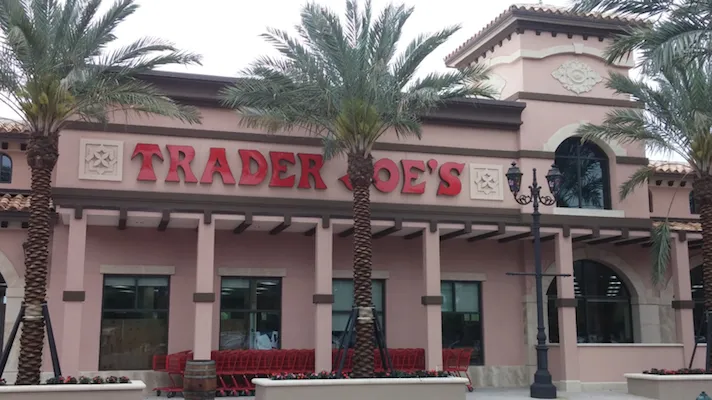Chain Drug Review’s sister publication, MMR, annually publishes a study of the 100 largest grocery, drug and discount store markets, ranking the markets in descending order by the market share of the leading retailers.
This year’s study is included in MMR’s latest issue, dated August 17. Two of the categories, drug stores and discount stores, show few surprises.
Trader Joe’s is one of the fastest-growing grocery retailers in the U.S.
In the drug store categories, two retailers, CVS and Walgreens, are dominant across a broad range of markets, filling the No. 1 and No. 2 positions in a majority of urban centers. Indeed, the only surprise, if it can be labeled a surprise, is Rite Aid’s strong placement in several markets, and its leadership position in a few of them.
Rite Aid has been resurgent for some time now, but the strength of that comeback has perhaps been overlooked, especially when compared to the dazzling performance Walgreens and CVS have registered of late.
Clearly, Rite Aid, in repositioning itself with a more pronounced health care emphasis, has hit a chord with consumers, who have found the drug chain’s simple and simply understood appeal to basic health and wellness difficult to resist.
Similarly, the discount store category offers few surprises. Despite Walmart’s struggles of late, and Target’s setbacks, these two discount retailers remain firmly entrenched atop the discount store trade class.
Walmart, particularly, has demonstrated strong resilience, especially in its core Southern and Midwestern markets. And Target, despite its sales downturn, has recovered to the extent of remaining a strong No. 2 in the discount store segment. Beyond these two retailers, the discount store segment remains very fluid, primarily because no strong contender has emerged to capitalize on the struggles of the top two.
Grocery retailing paints a different picture, however. Indeed, the top 100 grocery markets illustrate a retail category that remains largely regional in character, despite the strength of Kroger and Albertsons/Safeway. Publix, Wegmans, H-E-B and a handful of others are powerhouses in their regions.
Look just below the three or four market leaders and you will find a handful of relative newcomers with market share figures of 3%, 4% and 5%. Moreover, these share numbers have been steadily increasing. And they cover a broad range of markets, encompassing cities of different sizes in vastly different geographies.
Among these up-and-comers, two grocery retailers stand out. Neither is a home-grown retailer; rather, both originated in Germany. Their names are Aldi and Trader Joe’s. And they are two of the fastest-growing grocery retailers in the U.S.
Both are characterized by similarities and differences. Each can be described as a conventional grocery retailer, in that they operate small stores with a limited number of SKUs. Each emphasizes private label merchandise. And each focuses heavily on price, meaning that the merchandise they sell is competitively priced.
Their similarities extend to the product choice each offers. Put another way, value. Put another way, the choice is severely limited. However, both Aldi and Trader Joe’s offer merchandise not ordinarily found in a grocery store. Moreover, this merchandise is usually among the most price-sensitive in the mix.
The differences are easier to describe. Aldi can best be described as a no-frills retailer, while Trader Joe’s consistently broadens its merchandise assortment. Neither can be described, however, as significantly represented in general merchandise. These are, after all, food retailers, and their selection is limited almost exclusively to grocery products and categories.
What’s their primary attraction for consumers? That’s easily answered: price. Or, put another way, value. But there’s another, less obvious attraction as well. These stores are easy to shop. As stated, they are small stores with limited merchandise assortments. They shun promotional activity. As a rule, the price you see is the price you pay.
Why have they become so successful? The answer, again, is simplicity. In a day when U.S. grocery retailers are opening larger, more complicated stores that have become more confusing and more difficult to shop, Aldi and Trader Joe’s have returned simplicity to the shopping experience. In the process, they are transforming the grocery shopping experience in America.









